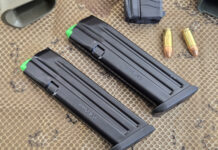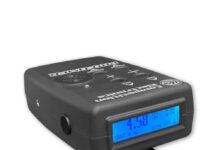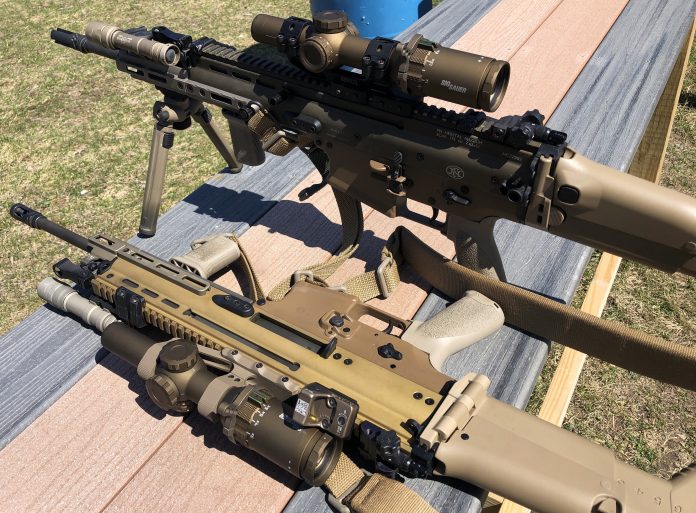
You’ve seen them on competition guns. You’ve seen them in video games. And now we’re starting to see them on general issue systems for the U.S Military (M110A1 SDMR).
Offset aiming systems are a natural extension of “backup” aiming systems, like BUIS. It’s an extension from top mounted dots too, those have been seen on optics like Marine Corps SDO’s and a variety of precision optic systems. The option has become so well regarded that several replacement ring pieces exist to hard mount the popular microdots to the mounts.
The advantages of an offset dot or irons, over BUIS or a top mounted dot, center partially around the optic height over bore offset. An offset aiming solution, whether irons or dot, can be given a nearly identical height from the barrel that the primary optic has. This means that your eye can find the offset aiming system at roughly the same height off of the stock that it finds the primary optic. Finding your aiming systems on the same “plane” greatly simplifies the body mechanics involved with using them, you don’t have two ‘levels’ to learn for placing your head and eye.
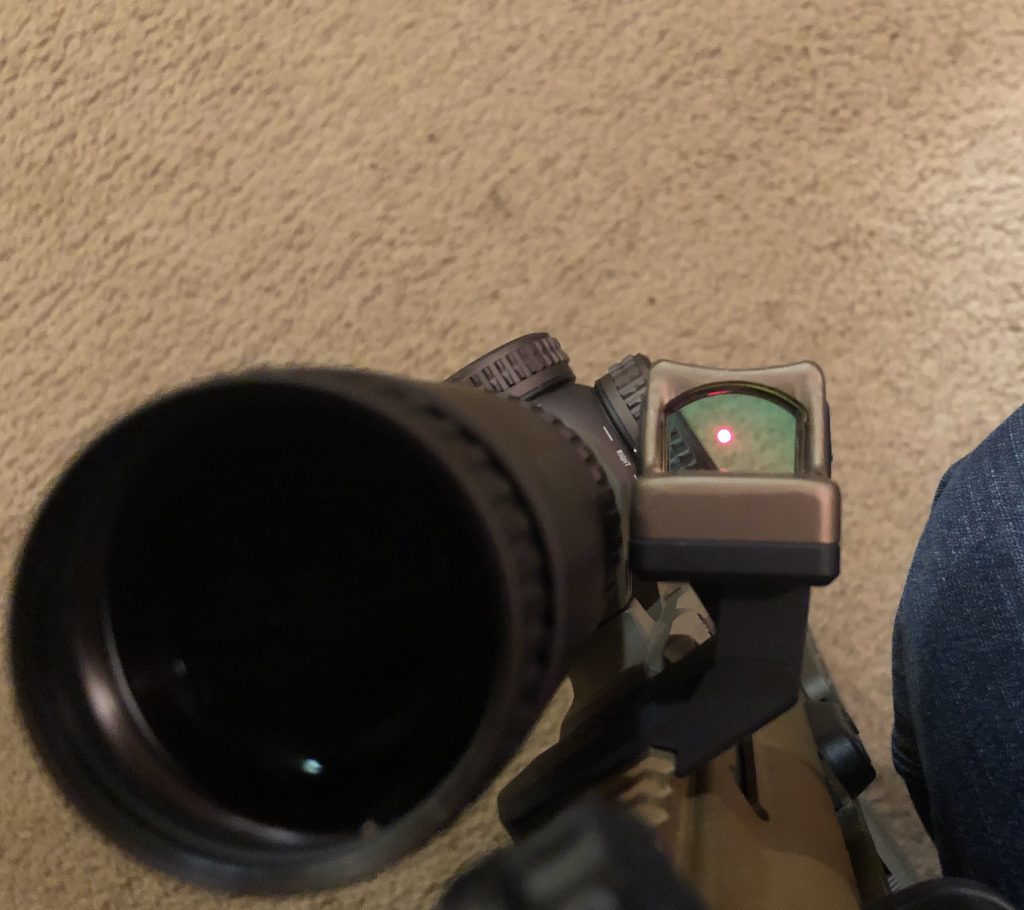
Now, with the mechanics advantages established for offset aiming systems, let’s a look at the principle operational consideration. I will call it Off Axis Barrel Optical Alignment.
Off Axis Barrel Optical Alignment
A rifle barrel is designed to operate, ideally, on a level plane and with its aiming system directly vertically above it. This configuration works with the slight upward angle built into firearm barrels, done for centuries at this point, to give them greater range and an advantageous ballistic trajectory.
In short, the sights (all conventional top mounted sights and optics) look across the path of the barrel so the bullet breaks the sight plane twice. Once on the way up and shortly out of the barrel, close to the shooter, and once on the way back down as gravity pulls the round down in its trajectory arc.
This advantageous exploitation of physics works best when the rifle is held vertically aligned and perpendicular to the earth, the rifle isn’t tilted left or right and is on a flat range. If the rifle is tilted forward (down) or backward (up) the effective range/trajectory arc is influenced. This is most notable at greater distances and extreme angles, however the shot will still break the sight plane twice.
Now we are using an optical system that isn’t vertically aligned to the barrel. This means that the barrels angle, which the primary optic is taking advantage of, is not aligned to the secondary aiming system. This will mean the shot you take, any shot, will only break the sight plane once. The second time the round would break the sight plane, it will be off axis from the sights. If you tilt the rifle left (like I do) for your offset dot or iron sights, the shot will drift further and further left the further down range it goes.
Add to this, most offset optics are purposely zeroed at extreme short distances, 10-15 yards/meters. Taking advantage of the offset optic’s noninterference with the primary optic it can be actively used with the primary optic instead of as a backup only if the primary fails. This short zero distance increases the severity of the angles involved.
The result…
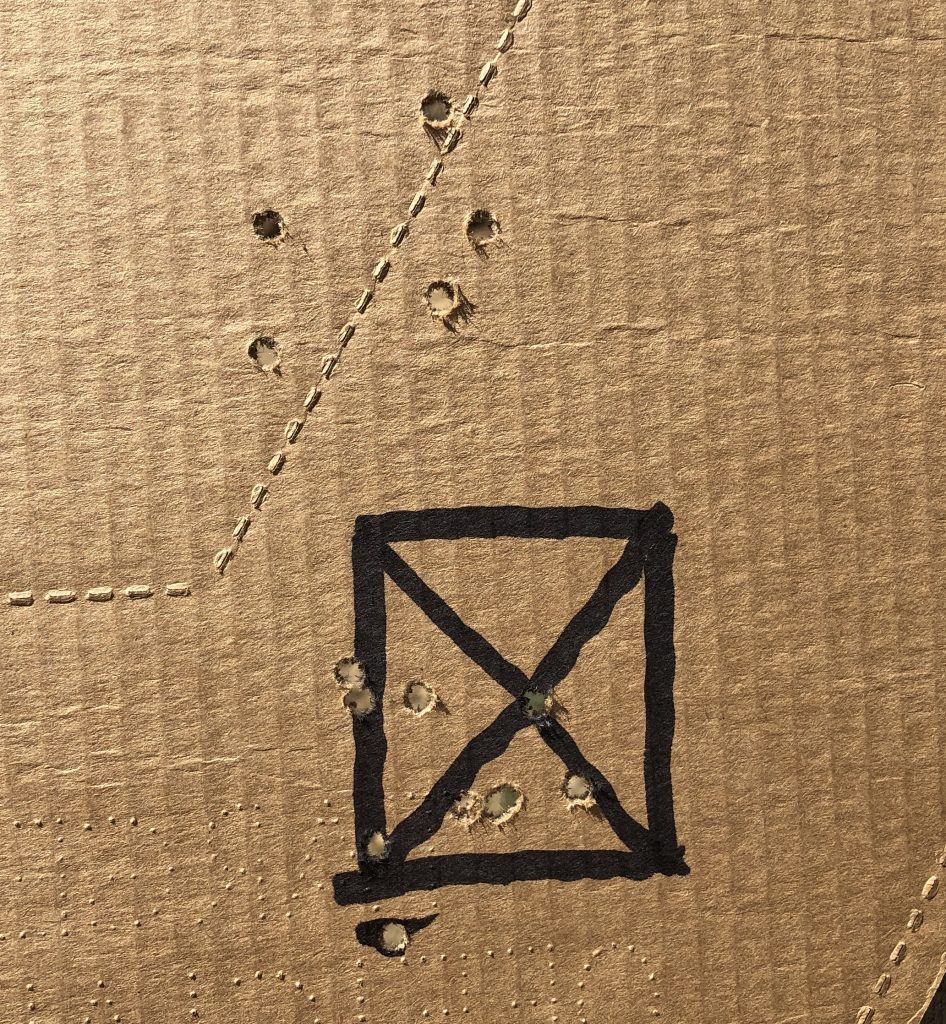
Notice in the picture, my primary optic is zeroed for point of aim/point of impact at 50 yards. My offset Trijicon HRS RMR is zeroed for point of aim/point of impact at 15 yards, a very short distance and one that puts the SCAR 16’s barrel at a very sharp (relatively speaking) angle both upward and left at a 35 degree angle with the Arisaka mount.
When I use the HRS at 50 yards with its 15 yard zero there is a notable displacement of my rounds. This displacement, especially leftward since gravity will bring the round back down, is going to increase as the range does.
It’s something a user needs to be aware of. But someone behind the rifle must also be aware of using the primary optic at an angle too, so this “problem” isn’t actually a problem since we know we are inducing it and can account for it. We’ve been doing similar things since WWII when off center optics were added to a variety of rifle systems, there would always be a point where the line of sight and the trajectory crossed only once with these.
But illustratively, the offset optic works incredibly well and has acceptable practical displacement with a short range zero. Especially when the primary optic is specifically zeroed to take over at 50 yards and beyond. The offset can be used further out, but a shooter would do well to actively shoot at distance and gain a physical appreciation for those distances and their displacement.
But the offset shown in the image is the maximum I will experience 0-50 yards, more than effective enough for rapid center mass shots at those close distances.
Offset is the best of all things “backup”
- They can be used without removing the primary optic. This means in the event of a catastrophic failure of the primary optic. The user doesn’t have to strip the primary with tools or QD mount lever systems to bring the other optic into use. Just tilt the rifle.
- They allow for a close POA/POI zero separate from the primary optic, making it effectively part of the primary optic suite for extremely close shots as well as being a ready backup optical system to take over if a primary fails. It is more easily useable and more actively useable than any other backup sight system. This adds the crucial aspect that it can be trained with as part of the whole rifle system without compromising the primary optic’s zero.
Is it necessary?
No.
It is useful, though. Very useful.
With the reliability of modern high grade optics, LPVO’s, ACOGs, and red dots alike, the need for backup systems is in an actively arguable state. I’m a firm believer in backup irons and I don’t believe that will change. My SCARs both have 3 sight systems right now, a primary, an close zero offset, and the factory irons as the final backup.
Anyone who enjoys redundant and overlapping useful systems, this fits the niche nicely.

